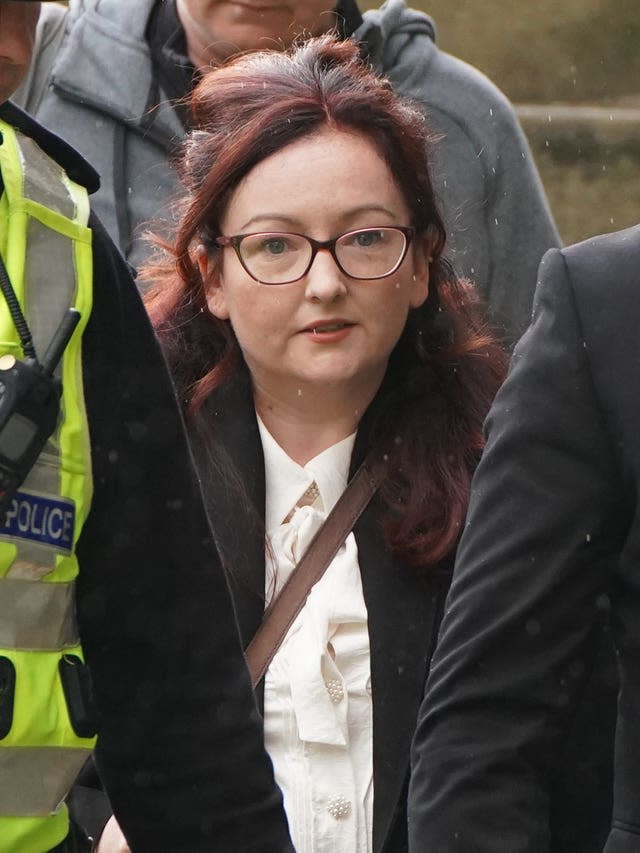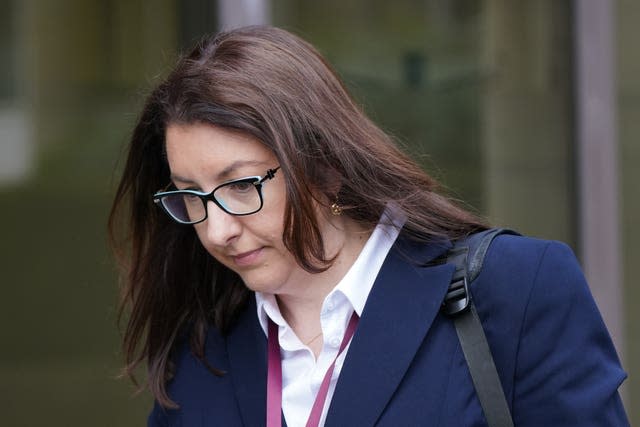‘Deadly force’ was justified in restraint of Sheku Bayoh, officer tells inquiry
A police officer said the amount of force used to restrain Sheku Bayoh before he died in police custody was justified, an inquiry into his death has heard.
Pc Ashley Tomlinson, giving evidence at the public hearing in Edinburgh on Thursday, said he used the highest level of police force – level 5, known as “deadly or lethal force” – when attempting to restrain the 31-year-old after he believed Mr Bayoh had killed his colleague, Pc Nicole Short.
The inquiry was told this level of force has the potential to cause serious injury or even death when it is applied, “and in all circumstances must be proportionate to the perceived threat and degree of jeopardy involved”.
Mr Tomlinson said he struck Mr Bayoh in the head with his baton after he claimed the detainee punched Ms Short in the back of the head causing her to fall onto the ground before “stomping on her back”.

He said: “When I perceived that Pc Short was about to be killed it was level 5 because I was under the genuine belief that he had or was in the process of killing Pc Short.”
Angela Grahame QC, senior counsel to the inquiry, asked: “Do you consider that the situation you’ve described was one where the use of deadly force was justified?”
Pc Tomlinson replied: “I do.”
The police officer said he felt Mr Bayoh was displaying the most serious category of resistance – level 6 – where “the perceived threat is that of serious injury or life threatening”, and can be with or without a weapon, the inquiry heard.

He said: “His (Mr Bayoh’s) actions towards Pc Short were that I thought he was going to kill her.
“We had reports of a knife as well.”
Ms Grahame askd Pc Tomlinson that he previously said he had not seen a knife in Mr Bayoh’s possession at any time during the incident to which he replied: “No, but there’s an opportunity to produce it from a concealed location.”
Earlier evidence heard Pc Tomlinson was asked to search for a knife while Mr Bayoh was in leg restraints, but instead found a packet of chewing gum and a mobile phone.

The pair of officers were responding to calls from members of the public about a black man acting “erratically” with a large blade in Hayfield Road, Kirkcaldy, Fife, on Sunday May 3 2015.
Mr Bayoh died shortly after his confrontation with police.
His family believe race played a part in his death, which the inquiry is investigating, along with examining the immediate circumstances leading to the death of Mr Bayoh, how the police dealt with the aftermath, and the following investigation.
Ms Grahame asked Pc Tomlinson if any of his colleagues made racist jokes and, if so, what he would do about it.
“I would challenge that,” he said.
“If someone uses inappropriate language you would pull them to one side and say, ‘that’s not on’, and explain the reasons why.
“I wouldn’t let something like that lie.”
When asked if he was involved in any community relation work with the black community in and around Kirkcaldy at the time of Mr Bayoh’s death, he said no.
And when asked if his fellow officers were, he said he did not know.
Ms Grahame added: “Do you think if Mr Bayoh had been white you would have made greater attempts to communicate with him than you did?”
Mr Tomlinson replied: “I think I made sufficient attempts to communicate. Race or perceived race wouldn’t influence that.”
Ms Grahame said the inquiry may hear evidence in due course that Mr Bayoh did not stomp on Ms Short when she was on the ground and asked the witness if he wished to comment, to which he said: “I can only tell you what I saw, and that’s what I saw.”
Claire Mitchell QC, representing the Bayoh family, made an application under rule nine to the inquiry and asked Mr Tomlinson further questions about his answers on the subject of race.
She asked him: “You’ve explained you haven’t heard, for example, any racist jokes in Kirkcaldy and if you did you would call that out. Did you ever hear your colleagues using the expression coloured in relation to describing a black person?”
Mr Tomlinson replied: “No.”
Ms Mitchell asked what he would do if he heard that term to which he said: “That’s not right, I would challenge them, that’s not the correct thing to be saying.”
She asked: “Race or perceived race can increase the risk if the person being restrained is black – have you been given or were you given in 2015, any training on that issue?”
Mr Tomlinson replied: “You would have to look at the training notes.”
“Do you recall being given any training on that?” she added, to which the officer replied no.
Earlier, the inquiry heard from Ali Akhar, 65, a shopkeeper in Kirkcaldy who was driving past Hayfield Road at the time Mr Bayoh was being restrained.
He said he saw “officers that had pinned down someone, and I also saw a woman police officer crossing the road”.
The witness said one officer “had his knee on the body” and the person on the ground has his hands held on his back.
The inquiry, being held at Capital House in Edinburgh before Lord Bracadale, continues.

 Yahoo Movies
Yahoo Movies 